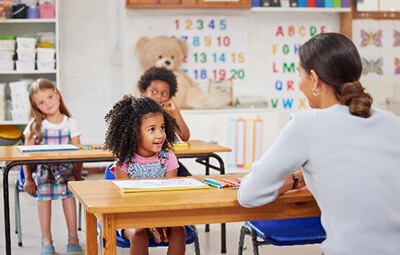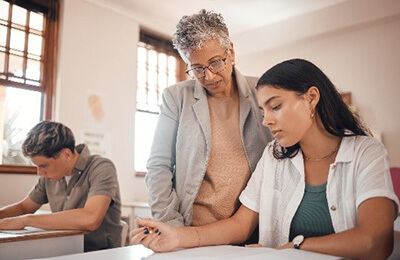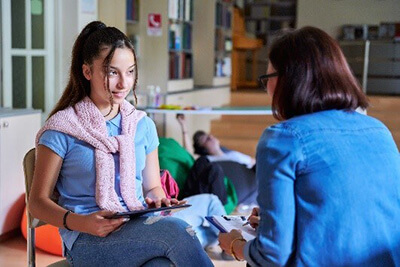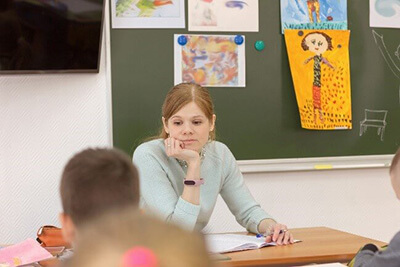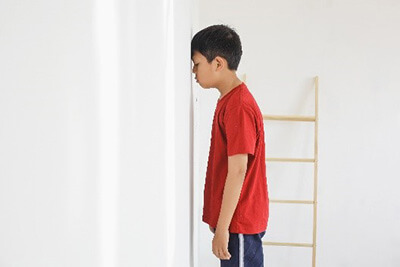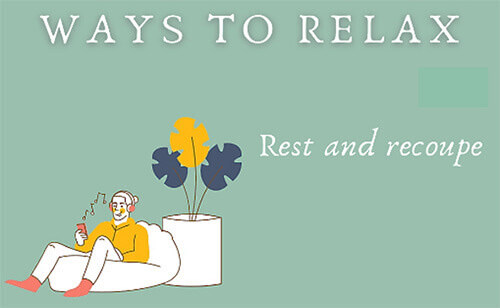In today’s fast-paced world, silence seems like a luxury! With constant notifications on the phone, the ever-present hum of technology, ears stuffed with air pods, the continuous bluster of traffic, and a restless world.…I am not surprised that silence doesn’t find a place quickly in our lives. However, silence can be a powerful tool for students and teachers. In this blog, we’ll explore the less talked about concept of “Silence in the Classroom – boon or bane,“ delving into the factors influencing it, its benefits and challenges.
 Students’ silence in the classroom has lately become an area of attention for educators and scholars However, the factors influencing students’ classroom silence have been regarded as a problem of the relationship and communication between the educator and the learners. These are pivotal factors in understanding and addressing classroom silence.
Students’ silence in the classroom has lately become an area of attention for educators and scholars However, the factors influencing students’ classroom silence have been regarded as a problem of the relationship and communication between the educator and the learners. These are pivotal factors in understanding and addressing classroom silence.
Years back, when I began teaching, one of the questions that always echoed through my mind was whether to embrace silence in the classroom. For me, a traditional classroom was where teachers talked, students listened, and discussions happened. It was a place where talking was teaching, and the students’ silence was golden. That Golden Silence, as I understood, was more about exerting power over pupils and restoring order. At least when I was a student, teachers would expect pin-drop silence in the class to ensure discipline and complete control. The most commonly used phrase, “finger on your lips”, was a favourite amongst teachers and class monitors. Maintaining silence was a way to create an environment where students could focus on the teacher’s instruction and absorb the information being shared to acknowledge the teacher’s expertise and authority. I wouldn’t say I liked the idea of a silent classroom in those days, as I found it very restrictive and suppressive from a student’s perspective. However, when I became an educator, I learned to appreciate the profound impact that silence could have on the teacher and the taught, and thus on the teaching and learning process. It’s important to note that the approach to classroom discipline has evolved. Modern educational theories and practices promote more interactive and student-centred learning environments. While silence still has a crucial role in certain situations, many educators aim to balance maintaining order and fostering a more dynamic and engaged classroom environment.
So, silence in the classroom can neither be strictly classified as a boon nor a bane. Its impact depends on how it is used within the educational context. It can be beneficial and challenging, depending on various factors and how it is integrated into the teaching and learning process. Let me highlight how it can be helpful, if used judiciously, to enhance children’s learning experiences.
To begin with, a creative way is to allocate ‘ME Time‘ during the day from lower grades onward. It could last from 15 minutes to half an hour, depending on its objective and the teacher’s and student’s needs. This particular time could be utilised in the following ways:
- Reflect & Introspect: Students must be allowed to quietly/silently reflect on what they’ve learned and process new information, thoughts and experiences, making meaningful linkages with their real world.
- Setting personal goals: Students can be encouraged to set personal goals, both academic and non-academic, to help them develop a sense of purpose and motivation.
- Guided mindfulness and relaxation activities: Such methods and techniques can help students manage stress, improve focus, and enhance emotional well-being.
- Journal Writing: Providing silent time for students to write in a personal journal entry can encourage introspection, self-expression, creativity, and a means to process their thoughts and experiences.
- Silent Reading or Learning: Allowing students to choose a book to read independently or explore a topic of interest can promote a sense of autonomy and a love for learning. For Silent Reading, DEAR Time (Drop Everything and Read Time) is a common practice in schools today. It can be a meaningful practice only if DEAR Time applies to all present in the school; from the guards, peons and support staff to the teachers, students and leaders, everyone should pick up something to read in quietude.
Unfortunately, oftentimes in the classroom, for a lot of students, the opposite of speaking is waiting to speak again. Students mostly think about what they want to say, rather than listen to what others have to say. Building a culture of silence as part and parcel of a regular class session can be a boon. Ideally for ‘Silence’ to be an effective tool in the classroom one can look at the benefits it offers:
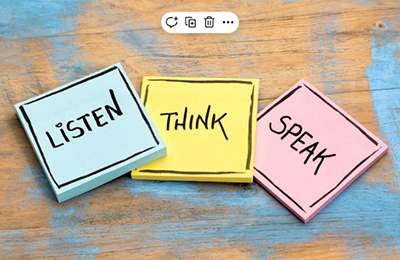
- As an educator, I realise that silence can work to the advantage of teachers and students, especially in enhancing communication skills. Remaining silent helps students focus on the teachers’ explanations and develop their listening skills. I used to think, “Be attentive and Listen carefully!” were the be-all and end-all phrases for students to listen, aka “Sit straight and pretend to listen!” I took some time to realise that active listening is a critical part of the teaching and learning process. Listening is not a “soft” skill but a paramount component of communication and collaboration that caters to students’ socio-emotional development. Inviting students to pause, reflect, pair, and share allows them to participate in their learning. They listen to what others are saying and learn to respect and appreciate diverse perspectives. Teachers can model active listening skills, but there is no substitute for students practising those skills in the classroom with classmates, beginning with pairs. So, once the students get into active listening mode, it leads to better comprehension and improved communication skills.
- A silent classroom also fosters ‘Inclusion’. Not all students learn in the same way. Some may need extra time to process information or think deeply about a topic. Silence ensures that all students get an equal opportunity to formulate and reorganise their thoughts, thereby eliminating the dominance of more vocal or assertive students and creating space for those who are less vocal and hesitant to participate actively. I remember a student named Naman, from the early primary wing, who often felt anxious about speaking in class. This was very different from how he was in his kindergarten years, when he would participate freely in any discussion. But to my surprise, he had become reluctant to share his thoughts, fearing judgment from his peers as he would usually say random things without any relevance to the topic being discussed. I was his English teacher and understood his struggle. To help him overcome his anxiety, I introduced short moments of silence before discussion and Q&A sessions. During these moments, Naman found solace. He could gather his thoughts and formulate his responses, and with motivation and appreciation, he could voice himself fearlessly. This simple practice boosted Naman’s confidence, transforming him into an active participant in class discussions. A solution like this ensures that diverse voices are heard and valued, leading to richer discussions and a more equitable learning experience.
- Silence in the classroom is a valuable tool for cultivating critical thinking, analytical ability, and logical reasoning in students. It provides the mental space and conducive environment necessary for deep contemplation and the ability to analyse and thus encourages thoughtful responses. These skills serve students well academically and are highly transferable to real-world problem-solving and decision-making, thereby ensuring that learning was happening at the higher levels of Bloom’s Taxonomy pyramid – extending into analysis, evaluation & creation.
- Ever wondered why meditation is done in silence? Silence is the basal requirement for focusing the mind, enhancing concentration, and achieving the deep relaxation and mindfulness that meditation aims to achieve. In silence, individuals can become more attuned to their internal thoughts, pace of breathing, emotions, and sensations. This self-awareness is fundamental to developing rational thinking– a technique enabling young minds to observe, think and question intelligently to comprehend situations and problems holistically.
In summary, silence as a boon in the classroom can be summed up as being a tool that can be harnessed for its benefits, but must be used wisely. It should be seen as something other than an all-encompassing solution but as a valuable resource to support learning when appropriately integrated into teaching and learning.
In Gordon Hempton words, “Silence is not the absence of something, but the presence of everything.“
This quote underscores the idea that in the quiet moments of the classroom, there is an abundance of learning, reflection, and potential. At the same time, let’s also be aware of the damage when silence is misplaced and ill-timed. Children often do not like to be silenced in the classroom for various reasons, as silence can be seen as restrictive and counterproductive to their learning and development. Here are some of the key reasons why it is considered a bane in class:
- Being silent directly impacts the social interaction of students. Talking and sharing ideas with their peers and teachers is an integral part of their social and emotional development in schools, and they thrive on it. Being silenced can be isolating and make them feel disconnected from their friends and classmates.
- Silence often deters students from being curious and creative learners, hampering their ability to explore the world around them. It can be stifling if their natural inclination to ask questions, share thoughts, and engage with their environment is being restrained. Active engagement in learning is crucial for conceptual understanding and deeper learning in any subject. For many children, being actively involved in discussions, asking questions, and expressing their thoughts helps them stay engaged and interested in the ongoing learning experience.
- Prolonged silence can lead to boredom and disinterest. If it can happen to us as adults, it is natural to happen to children, who are naturally playful and energetic. Children not actively participating or interacting will become restless or disengaged from learning.
- We all know that different students have different learning styles. Some may learn best by talking things through or discussing concepts with their peers. For them, silence can significantly challenge their ability to learn new concepts.
- Being told to be silent constantly can make students feel controlled, powerless, dominated upon…, which in turn, may lead to resistance, insolence and behavioural issues. For some children, this constant silencing may heighten their levels of stress, anxiety, fear of making mistakes or being judged by others in the class, and affecting their confidence and morale.
- From the educators’ point of view, it could be very challenging to assess or gauge students’ understanding and participation during moments of silence.
- Last but not least, if one doesn’t know where to draw the line, excessive silence can hinder the lesson flow and create unnecessary time pressure.
 So far, the focus of this article has been on how silence can be an effective tool vis-a-vis the challenges it can pose for teachers and students in the school environment. However, identifying and addressing silent students and teachers in a school environment is crucial too for creating an inclusive, supportive, and enriching educational community. We all know that every student is unique, and there could be various underlying reasons for their silence. It would make sense if we made an effort to view each student as a separate individual, with specific concerns. Here are some strategies for managing and understanding such students:
So far, the focus of this article has been on how silence can be an effective tool vis-a-vis the challenges it can pose for teachers and students in the school environment. However, identifying and addressing silent students and teachers in a school environment is crucial too for creating an inclusive, supportive, and enriching educational community. We all know that every student is unique, and there could be various underlying reasons for their silence. It would make sense if we made an effort to view each student as a separate individual, with specific concerns. Here are some strategies for managing and understanding such students:
- One must ensure that the classroom is a safe and inclusive space where all students feel comfortable, equal and willing to share their thoughts and ideas openly.
- Show genuine interest in your student’s well-being and success.
- Have one-on-one conversations with students who shy away from public speaking, prefer solo time and remain silent. Let them know that you’re there to support and care for them.
- Pay attention to the students’ body language and facial expressions. Sometimes, non-verbal cues provide insights into their feelings and thoughts.
- You can use your creativity to think of ways for students to participate beyond verbal responses. This could include written assignments, group work, or online discussions.
- Another good idea would be to ask students to keep a journal where they can write down their thoughts, questions, and reflections. This can be a non-threatening way for them to express themselves.
- Be patient and avoid pressuring them to speak up immediately.
- Sometimes, students feel more comfortable speaking in smaller groups or with a partner. Incorporate activities that allow for this kind of interaction.
- Ask other students if they’ve noticed any specific reasons for their silent classmate’s reticence. Sometimes, peers can provide valuable insights.
- Be aware of cultural differences in communication styles and adapt your teaching approach accordingly.
- If the student’s silence persists and seems to be affecting the academic performance or the student’s mental well-being, consider involving the parents or guardians. They may have insights or reasons for the issue.
- Don’t try to do everything on your own. Collaborate with your school’s support services or counselling department to provide appropriate assistance and guidance.
- Use formative assessments like quizzes or simple entry/exit slips, 1-minute Summary, or 3-2-1 strategies to gauge the silent student’s comprehension of the subject matter. This can help you understand if their silence is due to a lack of understanding.
- If there is trust between the teacher and students, and they choose to confide in you, keep the information confidential; unless there are concerns for their safety. Respect the privacy of the silent students.
 Understanding and managing a silent student requires patience, empathy, and a willingness to adapt one’s teaching methods to meet their needs. Creating a supportive and inclusive classroom environment can help these students overcome their reluctance and become more engaged participants in learning. This ensures that everyone has the opportunity to thrive, learn, and contribute to the school’s overall success. In essence, the quality of the relationship between educators and learners is paramount for successful classroom dynamics.
Understanding and managing a silent student requires patience, empathy, and a willingness to adapt one’s teaching methods to meet their needs. Creating a supportive and inclusive classroom environment can help these students overcome their reluctance and become more engaged participants in learning. This ensures that everyone has the opportunity to thrive, learn, and contribute to the school’s overall success. In essence, the quality of the relationship between educators and learners is paramount for successful classroom dynamics.
“In the stillness of the classroom, a symphony of thoughts unfolds, each note a whisper of wisdom, and in this hushed exchange, we nurture not only knowledge but also the souls of our learners.” – Anonymous


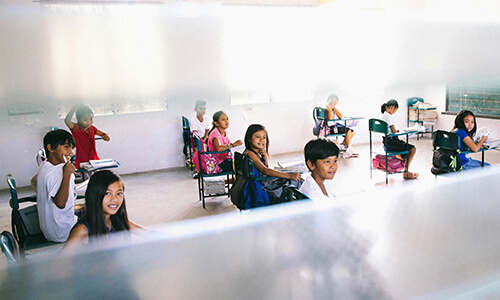










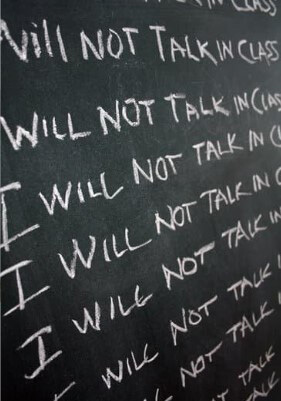











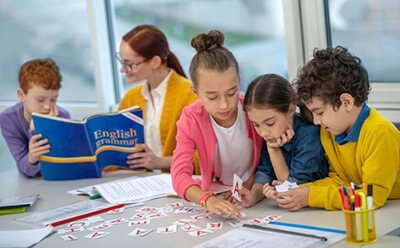



 just saying “Well done!” to another student, I should be marvelling at the level of difficulty s/he was able to handle on that challenging problem of calculating time between cities, based on their latitude;
just saying “Well done!” to another student, I should be marvelling at the level of difficulty s/he was able to handle on that challenging problem of calculating time between cities, based on their latitude;


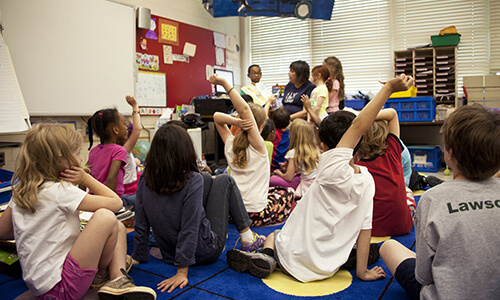













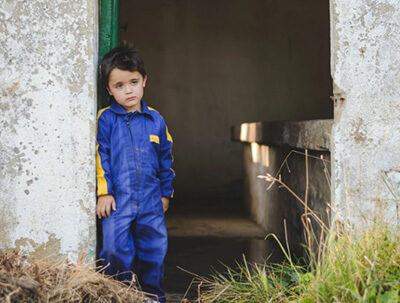


 Sharing with Caring. New age kids freely post things online, but some posts could be hurtful to others and even dangerous. Talk to your kids that videos, images, and websites can cause strong reactions in people who are affected in conflict and war situations. Create a family / school culture of NOT forwarding or sharing anything related to violence (no matter how dramatic or exciting it may seem). If they want to post or repost something about a conflict that’s not related to violence, they should seek your guidance and approval first.
Sharing with Caring. New age kids freely post things online, but some posts could be hurtful to others and even dangerous. Talk to your kids that videos, images, and websites can cause strong reactions in people who are affected in conflict and war situations. Create a family / school culture of NOT forwarding or sharing anything related to violence (no matter how dramatic or exciting it may seem). If they want to post or repost something about a conflict that’s not related to violence, they should seek your guidance and approval first. Pathways for good information. To give kids a break from situations of news and views about conflict and war, bookmark some sites where they can find good news that’s right for their age – like GK trivia, or new technology in cars / bikes / rockets, or what’s trending in music and fashion!
Pathways for good information. To give kids a break from situations of news and views about conflict and war, bookmark some sites where they can find good news that’s right for their age – like GK trivia, or new technology in cars / bikes / rockets, or what’s trending in music and fashion!


